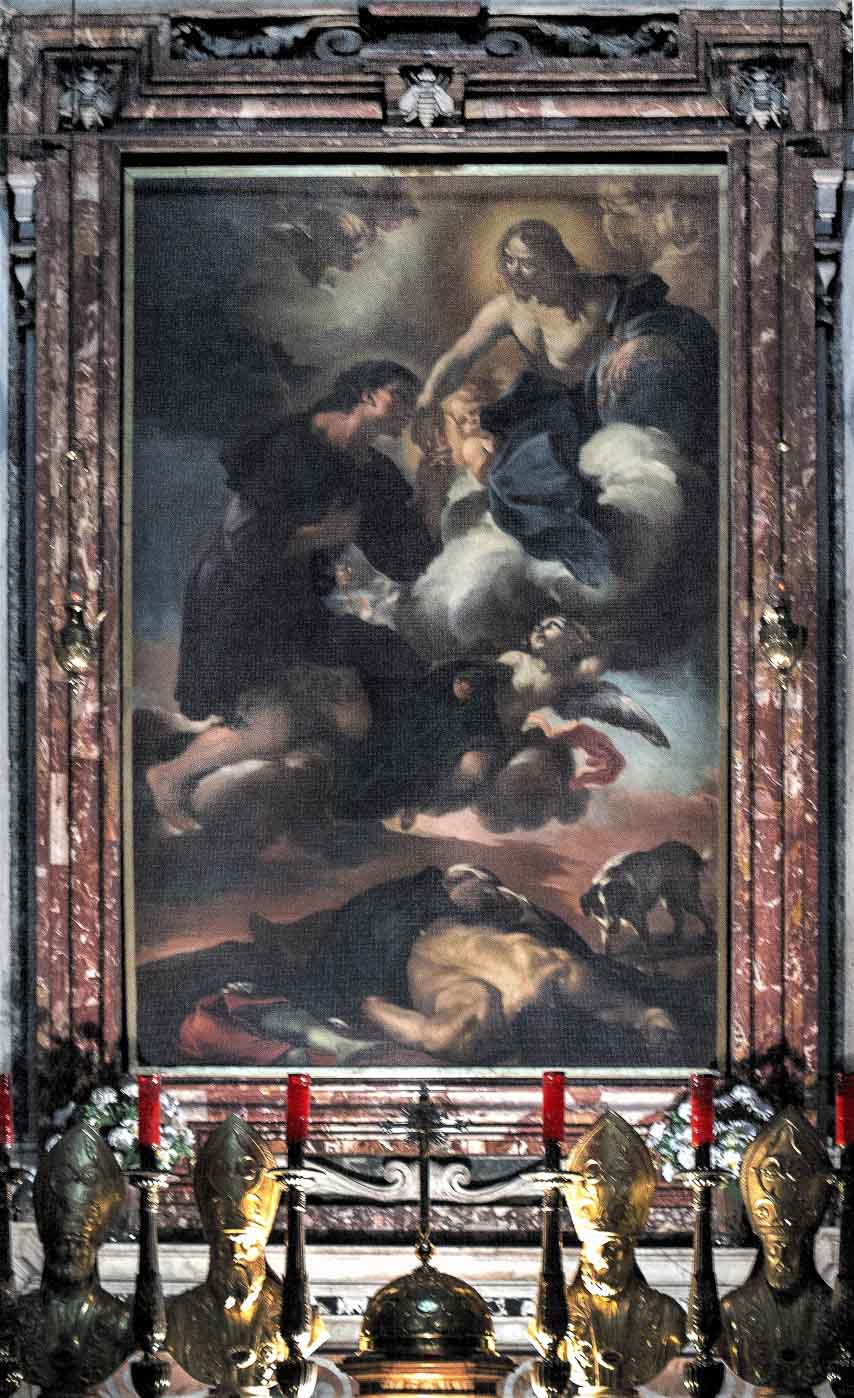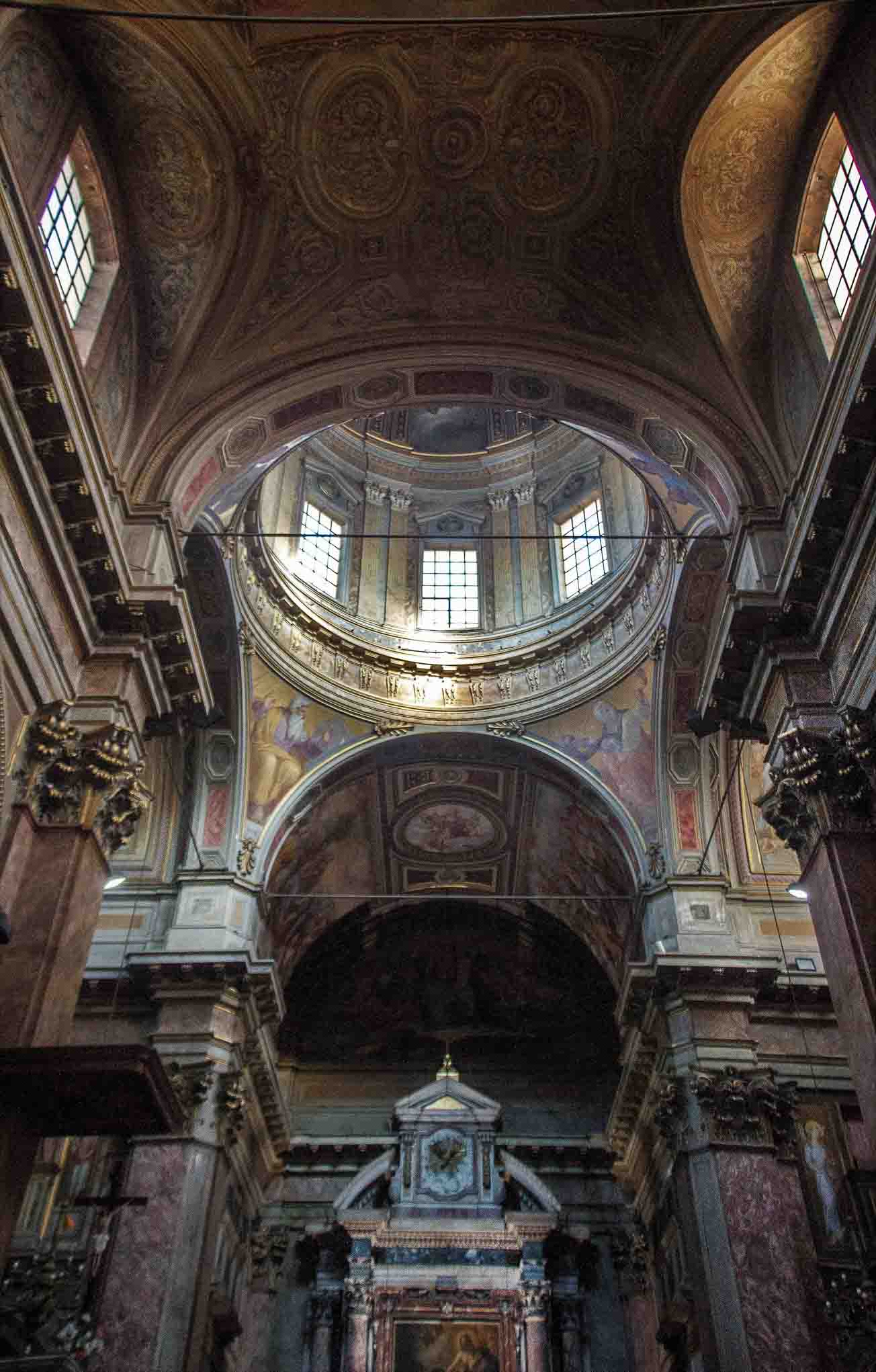
BUDOWLE & OBIEKTY Churches and chapels
Church of San Rocco – a church of the poor, the sick and the discarded

This church reminds us of yet another problem that troubled Rome in the past – it was a plague of desperate pregnant women, who were searching for a way out of their predicament, throwing themselves into the Tiber or doing so with newborn children. The problem of unwanted pregnancy was often solved in this way – it concerned women from wealthy families, but most of all the poor. Ripetta, had for centuries also been known as a district of prostitutes.
The direct cause for the decision of building the church, but also the hospital which is a part of it, was the epidemic of the plague which erupted in Rome in 1477 and decimated the populace of the city. The initiator of establishing the Confraternity of Boatmen and Innkeepers from Ripetta was Pope Alexander VI, who ordered the newly created fraternity to care for the hospital, as well as the construction of a small chapel, and the administration of works over the construction of the church. Initially the hospital dedicated to St. Roch was designated only for men, later also for women, the wives of the boatmen working in the port. In time it grew to be a six-story building and when Rome finally set itself free from infectious diseases it was a place where lone, poor, pregnant women were cared for, and where they could give birth to their unwanted children without too much fanfare. They were guaranteed complete anonymousness and privacy. In case of death of the child or the mother they were given the proper burial. When the birth was a successful one, the newborns were given to the nearby Ospedale San Spirito.
Similarly to the other buildings located in the area in the thirties of the XX century, the hospital fell victim to transformations, which took place during the works on uncovering the remains of the Mausoleum of Octavius Augustus found nearby.
The church however, remained. It was completed in 1503 and renovated in the XVII century according to the design of Giovanni Antonio de Rossi. However, the aforementioned fraternity lacked the funds to construct a façade. It was not created until 1834 and its designer was a great Roman architect, Giuseppe Valadier. Giving it a neoclassicist, simple and dry form, dominated by four, monumental Corinthian columns supporting a decorative tympanum, Valadier patterned himself on the Venetian structures of Andrea Palladio. Above the portal there is a coat of arms of Pope Gregory XVI from the Cappellari family, during whose pontificate the works on the church were finalized.

It is worth taking a look at the church elevation on the right side, where we will find another part of the history of Rome. This time it is going to be a testimony of floods, which since the beginning of the city’s existence were one of the greatest disasters which the inhabitants of Rome faced. A historical table of water depth measurements (water-gauge) from 1821 gives the exact figures of just how high the water was during each of the unfortunate years of flooding (often it was as high as 6 meters in this location). This problem was not dealt with until the XIX century after the creation of embankments and the demolition of the port in 1880.
Giuseppe Valadier also modernized and restored the interior of the church which had been besieged by cataclysms for centuries, decorating it with, for the most part, XIX-century paintings and enriching with remains of other epochs. The interior which opens up onto chapels is clear and elegant. Although it does not contain excellent works of other, a few interesting objects can be found within.
Może zainteresuje Cię również
Church of San Girolamo dei Croati – here, where Jerome debates and preaches
Zgodnie z art. 13 ust. 1 i ust. 2 rozporządzenia Parlamentu Europejskiego i Rady (UE) 2016/679 z 27 kwietnia 2016 r. w sprawie ochrony osób fizycznych w związku z przetwarzaniem danych osobowych i w sprawie swobodnego przepływu takich danych oraz uchylenia dyrektywy 95/46/WE (RODO), informujemy, że Administratorem Pani/Pana danych osobowych jest firma: Econ-sk GmbH, Billbrookdeich 103, 22113 Hamburg, Niemcy
Przetwarzanie Pani/Pana danych osobowych będzie się odbywać na podstawie art. 6 RODO i w celu marketingowym Administrator powołuje się na prawnie uzasadniony interes, którym jest zbieranie danych statystycznych i analizowanie ruchu na stronie internetowej. Podanie danych osobowych na stronie internetowej http://roma-nonpertutti.com/ jest dobrowolne.